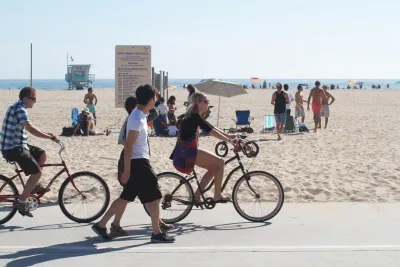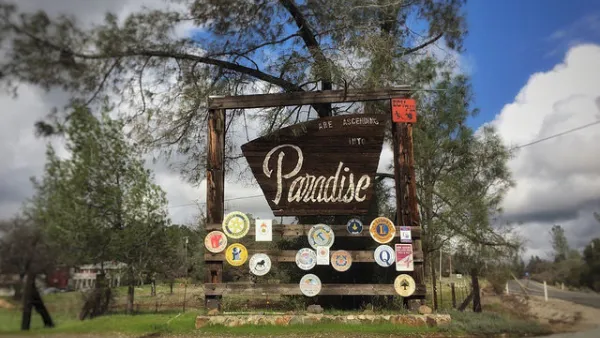Rather than projecting when the 50 million milestone will be reached, demographic and political indicators predict the state's population is more likely to decline, according to Joe Mathews of Zócalo Public Square.

Upon crossing the 40 million threshold, expect "another round of boasting about our size, not merely in population but in economic output and cultural impact, opines The moment will also produce new predictions about how soon we’ll get to 50 million or even 100 million people." [Listen to interview on KCRW].
But such projections are dubious. Instead, California should consider the real possibility that our era of population growth is nearly over — and that shrinkage could be our future.
California’s population growth is already at record lows — less than 0.8 percent annually — and falling. During the heyday of immigration, in the 1980s, annual population growth was 2.5 percent a year. Indeed, with many other states growing faster than the Golden State, in 2022 California could lose a seat in the House of Representatives for the first time.
Other states are growing at rates that California experienced many decades ago. Idaho grew by 2.2 percent from July 2016 to July 2017; Utah by 2 percent, the fastest in the prior year.
"Trends that have produced population decline in other places are now strong in California," warns Mathews.
Our birth rate has fallen to its lowest rate ever. We’re losing more people to other states each year than come back to us. And international immigration remains low — and could fall further given the federal government’s harassment and mass deportation of immigrants.
For a glimpse into the Golden State's potential demographic future, consider the path taken by the Empire State, the nation's most populous until California topped it in 1964. In 2014, the Sunshine State knocked New York from third to fourth most populous.
According to Dan Clark of PolitiFact on Sept. 29, 2017, "New York lost a net 846,669 people to other states between 2011 and 2016, more than any other state. Illinois recorded the second-highest outmigration in the country with a net loss of 540,166 residents."
Mathews is concerned by what he observes in Sacramento. "Our state’s own policies — especially underinvestment in schools, infrastructure and housing — all discourage family creation and add to the high cost of living that drives people out of California," he writes.
However, most blame for the number one driver of out-migration, high housing costs, lies with local governments, not Sacramento. According to a January study by UC Berkeley and Columbia University, local land use processes, specifically the approval process, is the main impediment to housing production in California.
State legislators could have addressed this problem by approving a controversial bill, SB 827, Transit-Rich Housing Bonus. The bill died in its first committee hearing in April.
While some in the environmental community may be pleased with the notion of population decline, Mathews tells Santa Monica NPR affiliate, KCRW, in the July 19 edition of Zócalo's Connecting California, "that it bodes poorly for the future of the nation's most populous state."
Mathews argues that we need a growing population, especially of young people, to maintain our status as an innovative force in the international economy.
He ends his column by urging policymakers to "think more seriously about how to attract more people here from other states and countries, and better nurture and retain the young people we have here now."
FULL STORY: Could California’s Population Actually Shrink?

National Parks Layoffs Will Cause Communities to Lose Billions
Thousands of essential park workers were laid off this week, just before the busy spring break season.

Retro-silient?: America’s First “Eco-burb,” The Woodlands Turns 50
A master-planned community north of Houston offers lessons on green infrastructure and resilient design, but falls short of its founder’s lofty affordability and walkability goals.

Delivering for America Plan Will Downgrade Mail Service in at Least 49.5 Percent of Zip Codes
Republican and Democrat lawmakers criticize the plan for its disproportionate negative impact on rural communities.

Test News Post 1
This is a summary

Test News Headline 46
Test for the image on the front page.

Balancing Bombs and Butterflies: How the National Guard Protects a Rare Species
The National Guard at Fort Indiantown Gap uses GIS technology and land management strategies to balance military training with conservation efforts, ensuring the survival of the rare eastern regal fritillary butterfly.
Urban Design for Planners 1: Software Tools
This six-course series explores essential urban design concepts using open source software and equips planners with the tools they need to participate fully in the urban design process.
Planning for Universal Design
Learn the tools for implementing Universal Design in planning regulations.
EMC Planning Group, Inc.
Planetizen
Planetizen
Mpact (formerly Rail~Volution)
Great Falls Development Authority, Inc.
HUDs Office of Policy Development and Research
NYU Wagner Graduate School of Public Service





























